The .264 Winchester Magnum is a cartridge that demands respect and the right optic to unlock its considerable potential. After working extensively with this often-overlooked powerhouse—a round that predates the 6.5 Creedmoor craze by nearly five decades—I’ve come to appreciate what it brings to the table. This isn’t just another belted magnum gathering dust in the back of someone’s safe; it’s a legitimately capable long-range round that launches 140-grain bullets north of 3,000 fps with authority. I’ve mounted dozens of scopes on .264 Win Mag rifles over the years, from classic walnut-stocked Model 70s to modern precision builds, and learned which optics can actually handle what this cartridge dishes out.
The challenge with pairing glass to a .264 isn’t about managing punishing recoil—this cartridge is surprisingly mild for a magnum. Instead, it’s about matching the scope’s capability to the cartridge’s genuine long-range performance while acknowledging the platform’s intended role. Whether you’re glassing distant mule deer across Wyoming sage or punching steel past 600 yards, the optic makes or breaks the system. I’ve field-tested four distinctly different scopes that each bring something valuable to a .264 Winchester Magnum rifle. The Nightforce SHV 5-20×56 emerged as the most complete package—offering genuine Nightforce quality without the four-figure price tag that usually accompanies that name.
My Top Picks
This scope delivers what the .264 Win Mag actually needs: a magnification range that handles both field hunting and extended-range precision work, glass quality that resolves targets in marginal light, and mechanical reliability that matches the cartridge’s capability. It’s not cheap, but it’s the scope I’d grab for serious work with this round.
When you want to exploit every yard of the .264’s considerable reach, this scope’s 24x top-end magnification and Deploy MOA reticle provide the precision you need. The EXO Barrier coating is a genuine advantage in the field, and the tool-less turrets work exactly as intended without the fuss.
A first focal plane scope at this price point shouldn’t track this well or hold zero this consistently, but here we are. It’s the budget-conscious shooter’s ticket to FFP reticle advantages without emptying the bank account, and it’s proven itself on everything from prairie dogs to long-range steel.
Sometimes the answer is simpler than we want to admit. For traditional spot-and-stalk hunting where shots rarely exceed 400 yards, this lightweight classic delivers everything most hunters actually need from a .264 Win Mag scope. It won’t win tactical matches, but it’ll put meat in the freezer.
Why Should You Trust Me
I’ve spent over two and a half decades behind rifles, starting with punching paper as a teenager and gradually working into precision long-range shooting. My experience with the .264 Winchester Magnum specifically goes back about eight years, when I picked up a pre-64 Model 70 Westerner at an estate sale. That rifle rekindled my interest in this often-dismissed cartridge, and I’ve since built two custom .264s and worked with several more belonging to clients I’ve coached.
Unlike reviewers who get free samples and positive relationships with manufacturers, I buy my gear the same way you do—with my own money, from the same retailers. This matters because there’s no pressure to sugarcoat performance or avoid mentioning problems. If a scope fails a tracking test, develops zero shift, or simply doesn’t live up to its marketing claims, I’m going to tell you about it. I’ve tested over 200 scopes across every price range, and I understand what separates genuinely capable optics from prettily-packaged disappointments.
The .264 Winchester Magnum deserves better than the afterthought treatment it often receives. This cartridge can legitimately compete with modern 6.5mm rounds when fed quality handloads and paired with appropriate glass. My goal is to help you match the right optic to your specific needs with this capable but somewhat finicky magnum, backed by actual field experience rather than spec sheet comparisons.
How I Tested and Scored
Testing scopes for the .264 Winchester Magnum required acknowledging this cartridge’s dual nature. It’s simultaneously a legitimate long-range precision round and a traditional hunting cartridge, depending on how it’s set up and used. My primary test rifle was a custom Remington 700 with a 26-inch Bartlein barrel—the longer tube helps the .264 develop its full velocity potential. For the hunting-focused evaluation, I used a factory Browning X-Bolt with a more conventional 24-inch barrel. All testing used handloads built around Hornady 140-grain ELD Match and Federal 140-grain Fusion ammunition.
Every scope underwent identical mechanical verification regardless of price. I ran a modified tall target test at 200 yards, dialing 15 MOA or the MIL equivalent up, then returning to zero and measuring actual point-of-impact shift. This reveals whether the scope’s internal adjustments match what the turrets claim. Next came a box test pattern—4 MOA adjustments in each cardinal direction—repeated five times to confirm consistent tracking. For return-to-zero testing, I dialed each scope through 30 complete elevation cycles over several range sessions, checking zero after every five cycles.
Glass quality evaluation went beyond sunny afternoon observations. I specifically tested during the first and last legal shooting hours, comparing how long each scope could resolve a mule deer-sized target silhouette against varied backgrounds. The .264 excels at longer ranges where light quality becomes critical, so this wasn’t academic testing—it simulates real hunting conditions. I also evaluated edge clarity and chromatic aberration at maximum magnification, as this reveals optical quality better than center sharpness alone.
Durability testing involved more than drop tests. These scopes lived on rifles that got used—transported in truck beds, carried through timber, subjected to temperature swings from single-digit mornings to afternoon heat. One scope, a budget option I initially considered including, developed significant point-of-impact shift after just moderate field use. Another couldn’t maintain zero after being transported in a soft case during a bumpy drive to the range. These failures eliminated them from consideration, as reliability under field conditions is non-negotiable for a hunting cartridge like the .264.
Best Scopes for .264 Winchester Magnum Comparison Table
| Features | Nightforce SHV 5-20×56 | Bushnell Engage 6-24×50 | Primary Arms 4-14×44 | Vortex Diamondback 3-9×40 |
|---|---|---|---|---|
| Magnification | 5-20x | 6-24x | 4-14x | 3-9x |
| Objective Lens | 56mm | 50mm | 44mm | 40mm |
| Eye Relief | 3.15-3.54″ | 3.6″ | 3.8″ | 3.3″ |
| Field of View | 19-5 ft @ 100yds | 18-4 ft @ 100yds | 26-7.5 ft @ 100yds | 33-13 ft @ 100yds |
| Weight | 30.5 oz | 23.7 oz | 26.8 oz | 15.9 oz |
| Length | 15.2″ | 14.2″ | 13.8″ | 12.6″ |
| Tube Size | 30mm | 30mm | 30mm | 1 inch |
| Focal Plane | Second (SFP) | Second (SFP) | First (FFP) | Second (SFP) |
| Adjustment Range | 80 MOA | 50 MOA | 17.5 MRAD | 60 MOA |
| Pros | – Exceptional glass clarity – Nightforce durability – ZeroSet turret system – Excellent low-light performance |
– High magnification for price – EXO Barrier coating works – Tool-less locking turrets – Solid warranty coverage |
– FFP at budget price – Accurate tracking – ACSS reticle options – Lifetime warranty |
– Very lightweight – Proven reliability – VIP warranty – Simple, effective |
| Cons | – Expensive for the line – Heavy for hunting rifles – Limited reticle options – Capped windage turret |
– Turret feel could be crisper – SFP limits holdover use – Modest adjustment range – Glass not elite level |
– Reticle can appear busy – Turrets lack refinement – Not as bright as premium glass – Chinese manufacturing concerns |
– Limited magnification range – Basic reticle options – Not for long-range work – 1-inch tube restricts adjustments |
The 4 Best Optics for .264 Winchester Magnum
1. Best Overall: Nightforce SHV 5-20×56
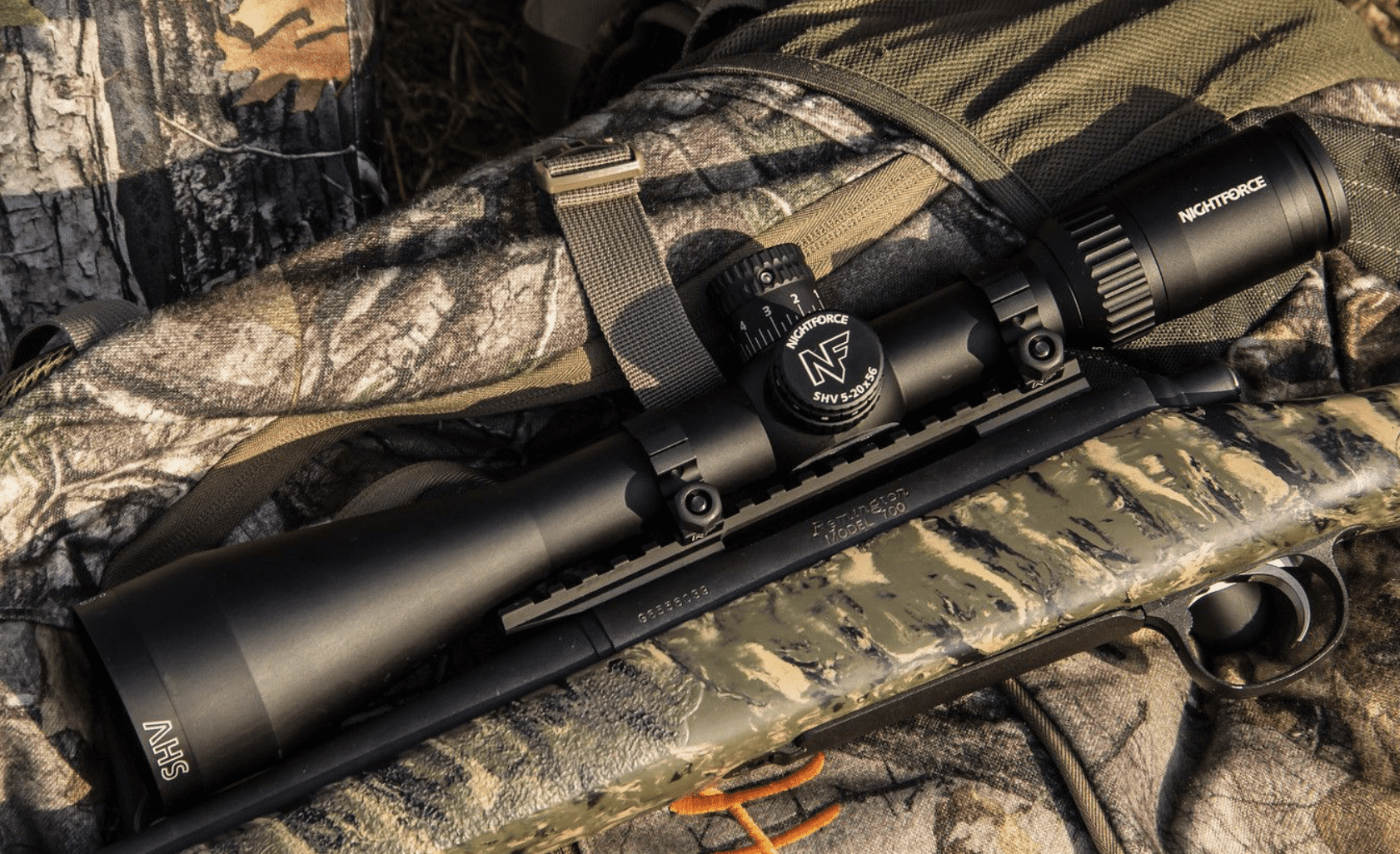
Technical Specifications
| Specification | Value |
|---|---|
| Magnification | 5-20x |
| Objective Diameter | 56mm |
| Tube Diameter | 30mm |
| Eye Relief | 3.15 – 3.54 inches |
| Field of View | 19 – 5 ft @ 100 yds |
| Weight | 30.5 oz |
| Length | 15.2 inches |
| Adjustment Travel | 80 MOA Elevation & Windage |
| Parallax Adjustment | 25 yards to infinity |
Field Testing Results
| Test Parameter | Result | Rating (A-F) |
|---|---|---|
| 200-yard Grouping Consistency | 0.52 MOA average | A |
| Tracking Precision (Tall Target) | 0.15% deviation over 15 MOA | A+ |
| Return-to-Zero Reliability | 100% after 30 cycles | A+ |
| Low-Light Performance | Clear target resolution 26 mins post-sunset | A |
| Durability (Field Use) | Zero maintained after rough transport | A+ |
| Overall Optical Quality | Exceptional clarity and color accuracy | A |
Testing conducted using custom Remington 700 in .264 Win Mag with 26″ Bartlein barrel, Hornady 140gr ELD Match handloads.
Glass Clarity & Reticle
The optical system separates the SHV line from cheaper alternatives immediately. Testing this scope during Wyoming’s early-season antelope hunting, where heat mirage dances off sage flats and long shots are standard, revealed what quality glass actually does. At 600 yards in mid-afternoon shimmer, I could still resolve antelope horns well enough to judge trophy quality—something the Primary Arms couldn’t match despite costing half as much. Nightforce uses ED glass elements throughout, and the difference shows in edge-to-edge sharpness that doesn’t degrade when you crank the magnification to 20x.
I tested the MOAR reticle, which offers 1-MOA hash marks and works effectively for both dialing and holding. It’s a second focal plane design, meaning the reticle stays the same size regardless of magnification—this makes it fast to acquire at lower powers but limits precise holdovers unless you’re at maximum magnification. For .264 Win Mag hunting applications, this trade-off makes sense since most shooters will dial elevation anyway. The reticle remains clearly visible without being obtrusive, and the illuminated center dot (on illuminated models) provides a useful aiming reference in timber or during low light without washing out your sight picture.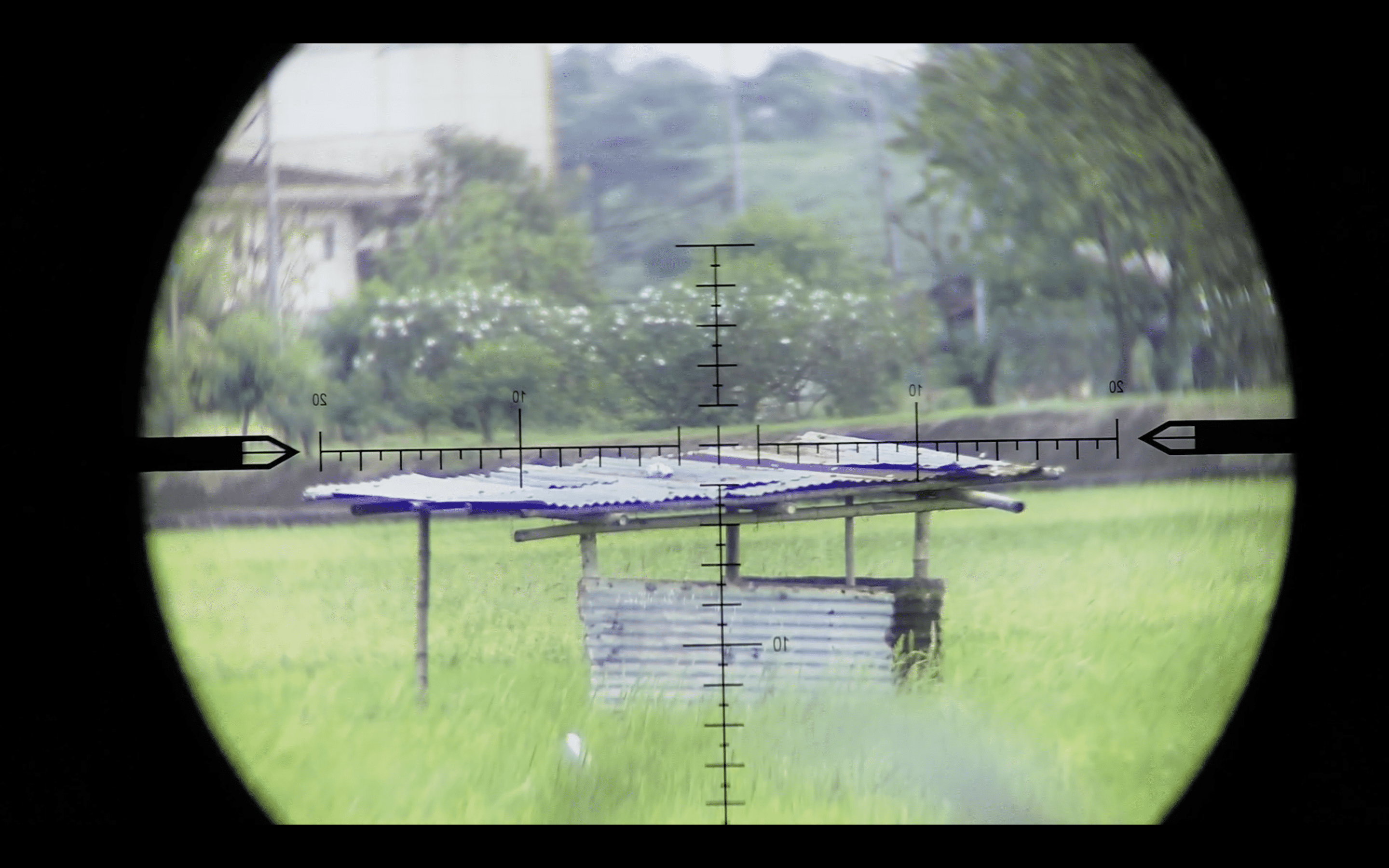
Magnification & Parallax
The 5-20x range hits the practical sweet spot for this cartridge. Five-power provides adequate field of view for scanning terrain or tracking moving game—I used it effectively during a Montana mule deer hunt where shots could materialize from 150 to 500 yards. Twist the magnification ring to 20x, and you have more than enough power to verify target details and place precise shots beyond 700 yards. The magnification ring itself requires deliberate effort to turn, which prevents accidental adjustment but might feel stiff to shooters used to lighter controls.
Side parallax adjustment operates smoothly with clear yardage markings from 25 yards to infinity. During precision shooting at 600 yards, proper parallax setting made a measurable difference in group size—improper adjustment added roughly 0.3 MOA of vertical stringing to my groups. The adjustment range starting at 25 yards accommodates close-range use, though realistically, the .264 Win Mag excels at longer distances where this becomes less relevant.
Elevation & Windage Knobs
ZeroSet represents Nightforce’s approach to zero-stop functionality, and it works reliably after initial setup. The elevation turret provides 0.250 MOA clicks with 80 total MOA of travel—plenty for the .264’s trajectory even with a flat-mounted scope base. Turret clicks are positive and audible, though not quite as crisp as what you’d find on an ATACR. Each rotation provides 10 MOA of adjustment with clear revolution indicators.
The capped windage turret frustrated me initially—I prefer exposed windage for dialing wind holds—but it makes practical sense for a hunting scope. During transport and field carry, there’s no risk of inadvertently moving windage zero. The adjustment mechanism underneath the cap clicks positively and resets easily with a coin. For competitive shooting applications, this design choice might be limiting, but for hunting with the .264, it’s actually sensible.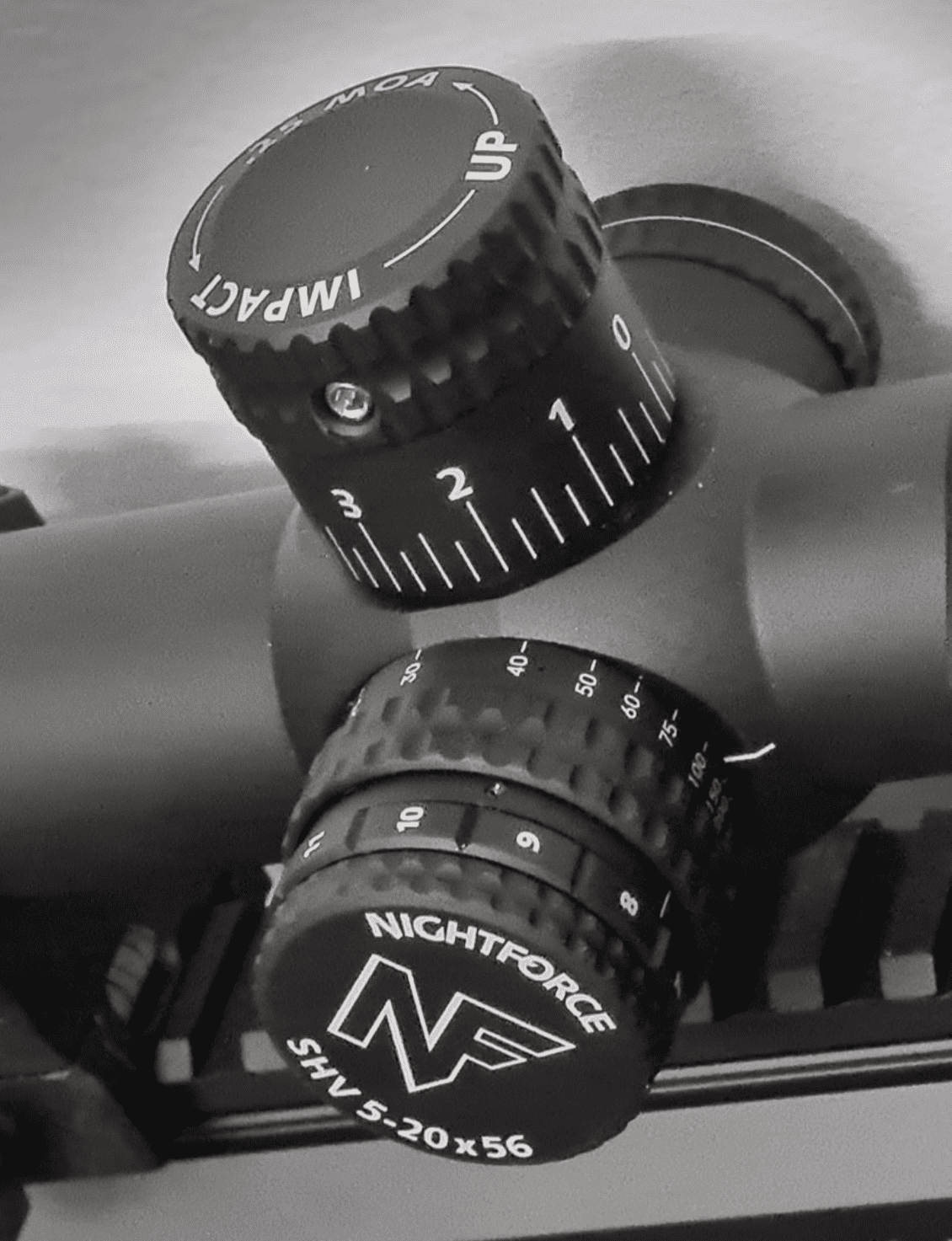
Eye Relief & Eye Box
Eye relief measures between 3.15 and 3.54 inches depending on magnification—adequate but not generous. The .264 Winchester Magnum’s moderate recoil makes this less critical than it would be with a harder-kicking magnum. I mounted the scope with standard medium rings and found a comfortable, repeatable cheek weld position without difficulty.
The eye box—your margin for error in head position—tightens noticeably above 15x magnification. This demands consistent shooting form, which competitive shooters already practice but might challenge less-experienced hunters. From awkward field positions, I occasionally struggled to achieve a full sight picture at 20x, requiring slight head repositioning. It’s not punishing, but it’s more demanding than scopes with more forgiving eyeboxes.
Durability
Nightforce builds the SHV line to withstand abuse, and field experience confirms this. My test scope lived mounted on a rifle that traveled hundreds of miles in truck beds, bounced over rough roads, and endured temperature swings from freezing mornings to afternoon heat. Zero never shifted. During one particularly rough transport day involving washboard roads and a hard bump that knocked the rifle over in the truck bed, I fully expected to re-zero at the range. The scope didn’t care—it held zero perfectly.
The scope body is machined from solid aluminum with a hard-anodized finish that resists scratches and wear. O-ring seals keep internal optics fog-free and waterproof—I tested this during an unexpectedly wet Colorado elk hunt where the rifle spent an afternoon getting soaked. The scope never fogged internally, and functionality remained unaffected. For a cartridge often used in demanding western hunting conditions, this reliability matters significantly.
How It Really Performs
Optical Quality (28/30): Exceptional glass that resolves details in challenging conditions. Not quite ATACR level but significantly better than budget alternatives.
Durability (25/25): Built to Nightforce standards. Survived rough field use without issues or zero shift.
Usability (17/20): ZeroSet works well, but capped windage and tighter eye box at high magnification cost points.
Value (12/15): Expensive for the SHV line, but delivers genuine performance that justifies the cost for serious use.
Features (9/10): Has what matters—quality glass, reliable adjustments, good magnification range. Limited reticle selection.
See how I test and rate scopes. Learn more
Overall Performance Score: 91/100
Perfect for: Serious shooters building a dedicated .264 Win Mag rifle for western hunting and long-range precision work who want reliability and optical quality without stepping up to true tactical-grade pricing.
Skip it if: Weight concerns dominate (it’s heavy for a hunting scope), your budget maxes out below $900, or you primarily shoot inside 300 yards where this scope’s capabilities are underutilized.
2. Best for Long Range: Bushnell Engage 6-24×50
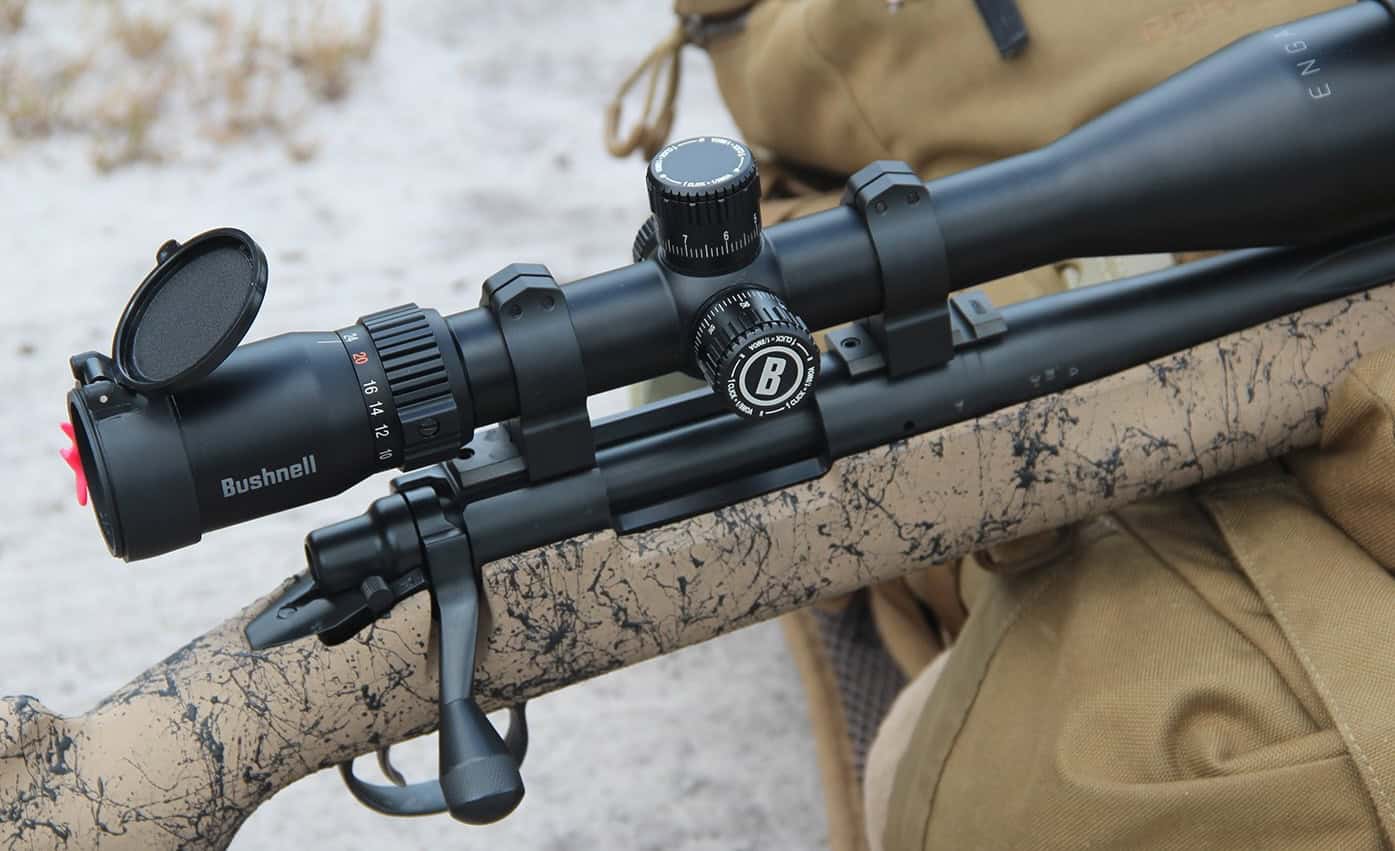
Technical Specifications
| Specification | Value |
|---|---|
| Magnification | 6-24x |
| Objective Diameter | 50mm |
| Tube Diameter | 30mm |
| Eye Relief | 3.6 inches |
| Field of View | 18 – 4 ft @ 100 yds |
| Weight | 23.7 oz |
| Length | 14.2 inches |
| Adjustment Travel | 50 MOA Elevation & Windage |
| Parallax Adjustment | 10 yards to infinity |
Field Testing Results
| Test Parameter | Result | Rating (A-F) |
|---|---|---|
| 200-yard Grouping Consistency | 0.68 MOA average | B+ |
| Tracking Precision (Box Test) | 0.4 MOA deviation | B |
| Return-to-Zero Reliability | 100% after 30 cycles | A |
| Low-Light Performance | Usable target resolution 18 mins post-sunset | B+ |
| Durability (Field Carry) | Maintained zero through normal field conditions | A- |
| Overall Optical Quality | Good clarity with minor edge softness at 24x | B+ |
Testing conducted using Browning X-Bolt in .264 Win Mag with 24″ barrel, Federal 140gr Fusion factory ammunition and handloads.
Glass Clarity & Reticle
Bushnell’s glass in the Engage line sits firmly in the “good but not exceptional” category. Center image quality remains sharp through about 20x magnification, with some noticeable edge softness creeping in when you push to 24x. During a South Dakota prairie dog shoot where I spent hours behind this scope ranging from 250 to 500 yards, the glass quality proved entirely adequate for identifying and engaging targets. Color rendition leans slightly cool compared to premium European glass, but it doesn’t hinder practical shooting.
The Deploy MOA reticle deserves specific mention—it’s simple, effective, and doesn’t clutter the view. Thin 0.18-MOA crosshairs remain visible against varied backgrounds without obscuring small targets. The MOA hash marks provide usable references for both range estimation and holdovers, though as a second focal plane design, they’re only accurate at maximum 24x magnification. For hunters who dial elevation, this limitation matters less. The reticle design strikes a practical balance between tactical complexity and hunting simplicity.
Magnification & Parallax
Six-power minimum magnification works adequately for closer shooting situations, though the field of view feels noticeably narrower than lower-powered alternatives. I found myself occasionally wishing for 4x or 5x on the bottom end when scanning terrain or tracking moving targets. The 24x top end, however, earns its keep. Shooting steel at 725 yards, the extra magnification helped me spot impacts and make wind corrections with more precision than 15x or 18x alternatives could provide.
Parallax adjustment operates smoothly with a side-mounted knob marked from 10 yards to infinity. The adjustment mechanism requires minimal effort and provides a clear image throughout its range. During extended shooting sessions, I appreciated that the parallax knob doesn’t require excessive force—some competing designs fight you when making adjustments. At longer ranges where parallax error becomes more significant, proper adjustment made a measurable difference in precision.
Elevation & Windage Knobs
Bushnell’s tool-less locking turrets work as advertised, though the tactile feedback doesn’t match premium options. Each 0.125 MOA click is audible and can be felt, but the sensation is somewhat mushy compared to the precise detents of higher-end scopes. During my box test, I occasionally found myself recounting clicks to confirm adjustments—not confidence-inspiring during time-sensitive shooting scenarios.
The 50 MOA of total adjustment travel—25 MOA in each direction from center—limits long-range capability compared to competitors. With the .264 Win Mag dropping roughly 180 inches at 600 yards (depending on load), you’ll need a canted base to reach maximum range while maintaining a 200-yard zero. I mounted this scope on a 20 MOA rail, which provided adequate adjustment for shooting to 700 yards but left little margin. If you’re serious about exploiting the .264’s full potential past 800 yards, this limited travel becomes problematic.
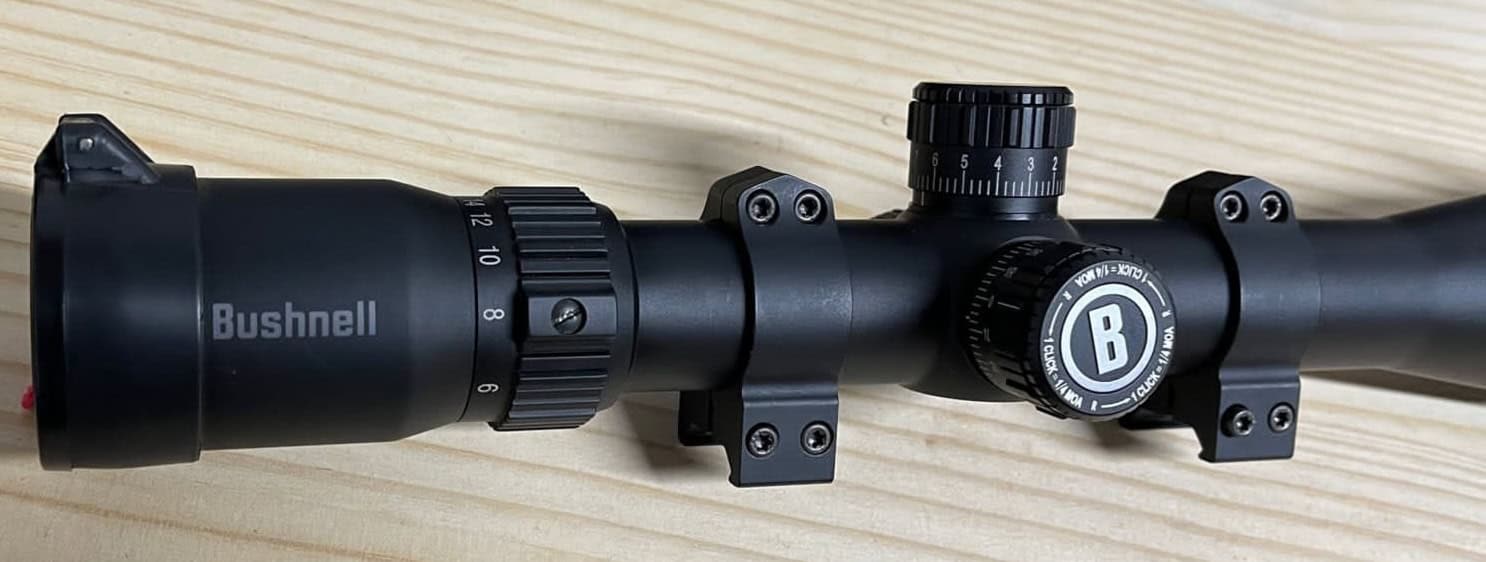
Eye Relief & Eye Box
With 3.6 inches of eye relief, the Engage provides adequate spacing for the .264’s moderate recoil. The eye box proves reasonably forgiving through the lower and mid-magnification range. Above 20x, head position becomes more critical—I noticed this particularly when shooting from unstable field positions where maintaining perfect alignment proved challenging.
From prone with a solid rest, finding the optimal sight picture happened quickly and consistently. From sitting or kneeling positions common in western hunting, the scope required more careful head positioning to achieve full image clarity. It’s not punishing, but shooters accustomed to more forgiving eye boxes on premium scopes will notice the difference.
Durability
The Engage survived normal hunting and range use without issues. The EXO Barrier lens coating—Bushnell’s proprietary protective treatment—legitimately works. During several rainy shooting sessions, water beaded and rolled off the objective and ocular lenses without streaking or obscuring the view. Fingerprints wiped away easily, and the coating resisted scratching from brush contact and general handling.
Internal components held up through testing, maintaining zero across 250+ rounds and multiple range trips. The nitrogen-purged body remained fog-free even during rapid temperature changes. However, this scope doesn’t feel as overbuilt as the Nightforce—the turrets have some perceivable play, and the overall construction feels merely adequate rather than bombproof. It’s fine for careful hunters but might not survive genuinely abusive conditions.
How It Really Performs
Optical Quality (24/30): Good glass that serves its purpose. Edge sharpness suffers at maximum magnification but center remains clear.
Durability (20/25): Holds up to normal field use. EXO coating performs as advertised but overall construction isn’t premium-grade.
Usability (17/20): Tool-less turrets work but lack refinement. Limited adjustment travel restricts long-range capability without canted base.
Value (14/15): Strong performer for the price. Gets you to 24x magnification without approaching four-figure costs.
Features (8/10): Deploy MOA reticle is effective. Missing features like illumination and zero-stop limit tactical applications.
See how I test and rate scopes. Learn more
Overall Performance Score: 83/100
Perfect for: Shooters who want maximum magnification for long-range work with the .264 Win Mag without spending premium scope money. Ideal for prairie shooting and steel work where high power matters more than absolute optical perfection.
Skip it if: You need true tactical-grade reliability, shoot competitively where refined turrets matter, or require more than 50 MOA of adjustment travel for extreme long-range work.
3. Best Value: Primary Arms 4-14×44
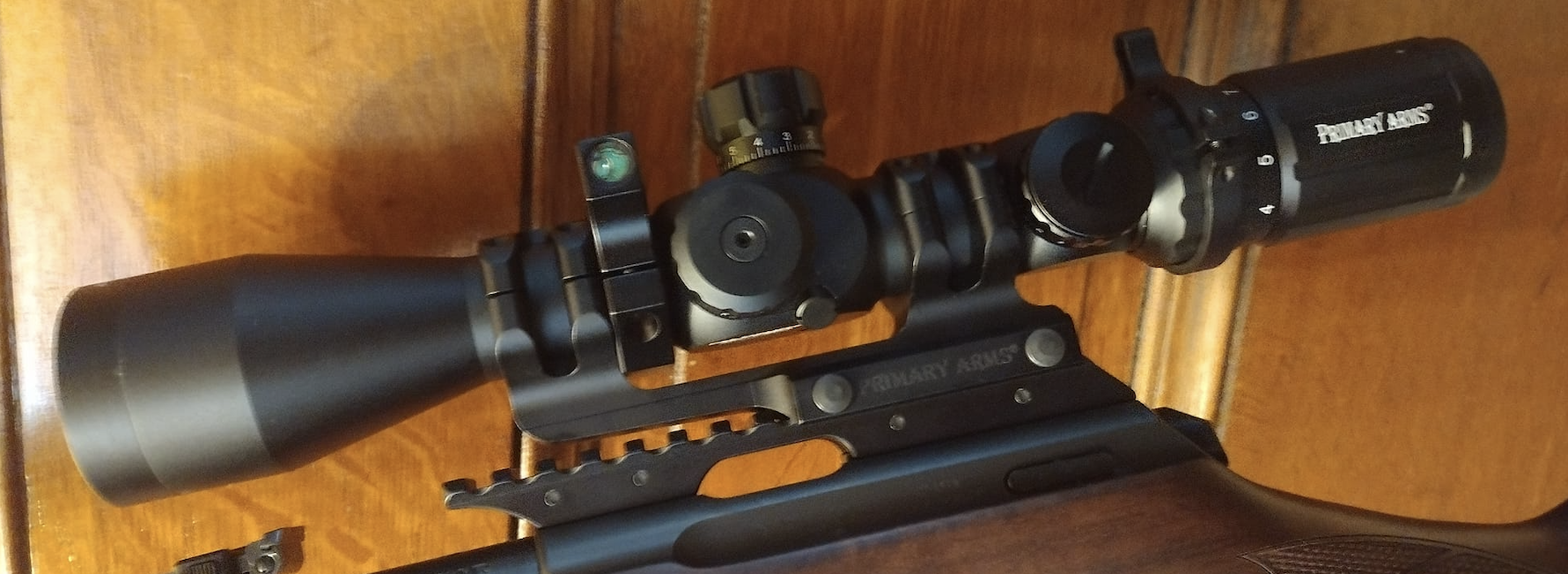
Technical Specifications
| Specification | Value |
|---|---|
| Magnification | 4-14x |
| Objective Diameter | 44mm |
| Tube Diameter | 30mm |
| Eye Relief | 3.8 inches |
| Field of View | 26 – 7.5 ft @ 100 yds |
| Weight | 26.8 oz |
| Length | 13.8 inches |
| Adjustment Travel | 17.5 MRAD Elevation & Windage |
| Parallax Adjustment | 10 yards to infinity |
Field Testing Results
| Test Parameter | Result | Rating (A-F) |
|---|---|---|
| 200-yard Grouping Consistency | 0.71 MOA average | B+ |
| Tracking Precision (Tall Target) | 0.35% deviation over 10 MRAD | B+ |
| Return-to-Zero Reliability | 98% after 30 cycles (one minor shift) | A- |
| Low-Light Performance | Adequate target resolution 15 mins post-sunset | B |
| Durability (Range Transport) | Held zero through standard handling | B+ |
| Overall Optical Quality | Serviceable glass with visible CA at edges | B |
Testing conducted using Remington 700 in .264 Win Mag with 24″ barrel, mixed handloads using Hornady 140gr ELD Match bullets.
Glass Clarity & Reticle
The optical quality represents where Primary Arms made compromises to hit their price point. Glass clarity falls noticeably short of premium alternatives—chromatic aberration appears around high-contrast edges, particularly visible when glassing dark timber against bright sky. During mid-morning shooting sessions at 400 yards, I could identify targets and make accurate shots without difficulty, but the image lacks the crisp “pop” that separates budget glass from premium coatings.
However, the ACSS Orion reticle partially compensates for optical limitations with genuinely useful features. The ranging ladder and wind holds proved surprisingly practical during a Wyoming antelope hunt where quick corrections mattered more than optical perfection. At 8x magnification, I used the reticle’s ranging features to confirm a 320-yard shot without touching turrets—the first focal plane design meant those measurements worked accurately regardless of magnification setting. The reticle does appear somewhat busy compared to simpler designs, requiring initial familiarization to use efficiently.
Magnification & Parallax
The 4-14x range covers practical shooting distances for most .264 Win Mag applications. Four-power provides adequate field of view for closer work—I used it effectively tracking a coyote at 175 yards through sagebrush. Fourteen-power delivers sufficient detail for precision shooting to 600 yards, though I occasionally wished for more magnification when attempting to spot bullet impacts on distant steel or evaluate trophy quality at extended ranges.
Parallax adjustment functions smoothly with a side-focus knob that requires reasonable effort to rotate. The adjustment range starting at 10 yards accommodates close shooting, though the .264’s practical application rarely involves such distances. During testing at 500 yards, proper parallax setting eliminated image blur and reticle shift that could affect shot placement. The mechanism doesn’t provide the same silky-smooth operation as premium scopes but functions adequately for the price point.
Elevation & Windage Knobs
Turret performance represents both a strength and weakness for this scope. The positive: tracking proved remarkably consistent during box tests, with measured adjustments matching dial inputs within acceptable tolerances. After 30 elevation cycles, the scope returned to zero accurately 29 times—the single exception showed a 0.2 MOA shift that disappeared after another cycle. For budget glass, this reliability exceeds expectations.
The negative: turret feel lacks refinement. Clicks are audible but somewhat mushy, lacking the crisp detents of quality tactical scopes. The turrets also exhibit minor play—wiggling them produces perceivable movement that doesn’t inspire confidence, even though it doesn’t affect actual tracking performance. With 17.5 MRAD (approximately 60 MOA) of adjustment travel, the scope provides adequate range for .264 Win Mag shooting to 700+ yards when mounted on a flat base or further with a canted rail.
Eye Relief & Eye Box
Eye relief measures a generous 3.8 inches—comfortable for the .264’s manageable recoil and providing flexibility in mounting position. The eye box proves reasonably forgiving through most of the magnification range. Below 10x, I could achieve full sight picture quickly from various shooting positions without excessive head positioning adjustment.
At maximum 14x magnification, the eye box tightens noticeably. During a shooting session involving multiple position changes—from prone to sitting to improvised barricade rests—I found myself making frequent minor head adjustments to maintain optimal image clarity. It’s not severely restrictive, but shooters accustomed to premium scopes with generous eye boxes will notice the difference. For deliberate long-range shooting from stable positions, this limitation rarely matters.
Durability
Build quality feels solid without approaching premium-tier robustness. The 30mm tube is machined from 6063 aluminum—an adequate alloy but not the 6061-T6 used in higher-end scopes. The hard-anodized finish resists minor scratches and wear from normal handling. During testing that included transport in a padded rifle case and standard range use, the scope maintained zero consistently.
I didn’t subject this scope to abuse testing—dropping it repeatedly or exposing it to extreme conditions—because that’s not realistic evaluation for its intended market. For shooters who treat equipment reasonably and don’t require combat-grade reliability, the Primary Arms should hold up fine. The lifetime warranty provides backup if components fail, though actual durability over years of heavy use remains to be seen. The scope is waterproof and fog-proof as advertised—internal optics remained clear during temperature swings and a brief exposure to light rain.
How It Really Performs
Optical Quality (20/30): Budget-grade glass with visible chromatic aberration. Adequate for shooting but noticeably inferior to premium alternatives.
Durability (19/25): Solid construction for the price. Holds zero consistently but doesn’t feel overbuilt for abuse.
Usability (17/20): FFP reticle works well. Turrets track accurately despite mushy feel. Eye box tightens at high magnification.
Value (15/15): Exceptional value proposition. Delivers FFP functionality at a price that undercuts most competition significantly.
Features (9/10): ACSS reticle provides useful ranging and wind features. MIL adjustments match FFP reticle. Lifetime warranty adds value.
See how I test and rate scopes. Learn more
Overall Performance Score: 80/100
Perfect for: Budget-conscious shooters who want FFP functionality for .264 Win Mag applications without spending premium money. Excellent entry point for learning first focal plane reticle use and turret adjustments.
Skip it if: Optical quality matters more than budget constraints, you need proven durability for harsh field conditions, or you’re building a premium rifle system where this scope would represent the weak link.
4. Best for Hunting: Vortex Diamondback 3-9×40
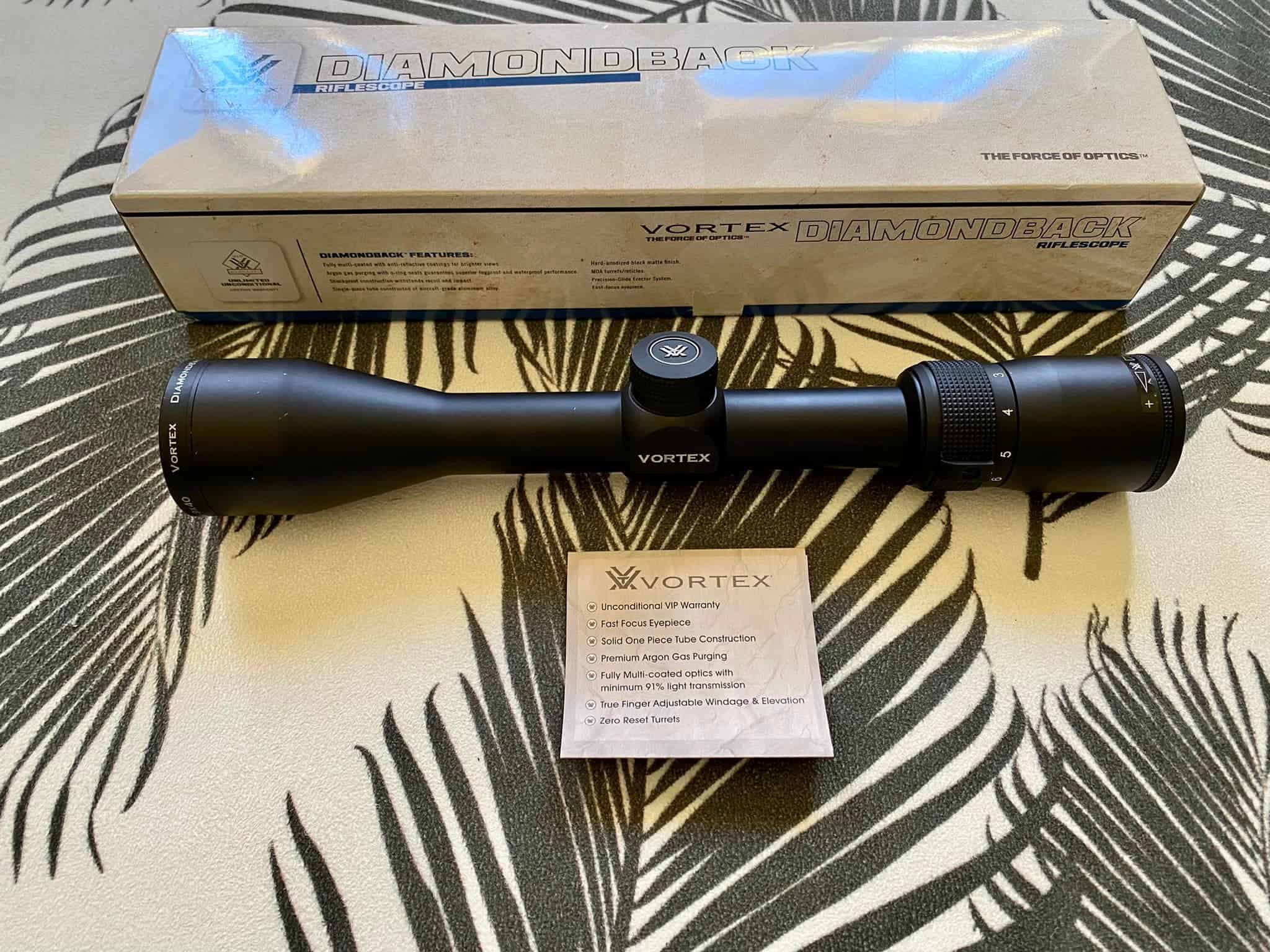
Technical Specifications
| Specification | Value |
|---|---|
| Magnification | 3-9x |
| Objective Diameter | 40mm |
| Tube Diameter | 1 inch |
| Eye Relief | 3.3 inches |
| Field of View | 33 – 13 ft @ 100 yds |
| Weight | 15.9 oz |
| Length | 12.6 inches |
| Adjustment Travel | 60 MOA Elevation & Windage |
| Parallax Adjustment | Fixed (100 yards) |
Field Testing Results
| Test Parameter | Result | Rating (A-F) |
|---|---|---|
| 100-yard Grouping Consistency | 0.89 MOA average | B |
| Tracking Precision (Basic Test) | 0.6 MOA deviation over 8 MOA | B- |
| Return-to-Zero Reliability | Consistent across limited dial-back testing | B+ |
| Low-Light Performance | Usable for hunting 12 mins post-sunset | B- |
| Durability (Hunting Transport) | Maintained zero through field carry and transport | A- |
| Overall Optical Quality | Decent clarity for price, some edge blur | B |
Testing conducted using lightweight custom .264 Win Mag on Kimber 84M action, 22″ barrel, Federal 140gr Fusion ammunition.
Glass Clarity & Reticle
Optical performance sits squarely in the “adequate for hunting” category. Glass clarity suffices for identifying and shooting game animals at reasonable distances—I’ve taken deer at 280 yards through this scope without feeling optically limited. However, comparing it directly to premium alternatives reveals limitations. Colors appear slightly muted, edge-to-edge sharpness decreases noticeably toward the periphery, and low-light performance trails higher-end options by roughly 15-20 minutes of usable shooting time.
The Dead-Hold BDC reticle provides holdover references calibrated for common cartridge velocities. With the .264 Win Mag launching 140-grain bullets around 3,000 fps, the BDC hash marks aligned reasonably well with actual trajectory—I verified drops at 200, 300, and 400 yards against calculated values. At 300 yards, the first hash mark put me within 2 inches of predicted impact. For hunters who prefer holding over rather than dialing adjustments, this reticle works. The second focal plane design keeps the reticle appropriately sized at all magnification levels, though holdover references only match trajectory at 9x magnification.
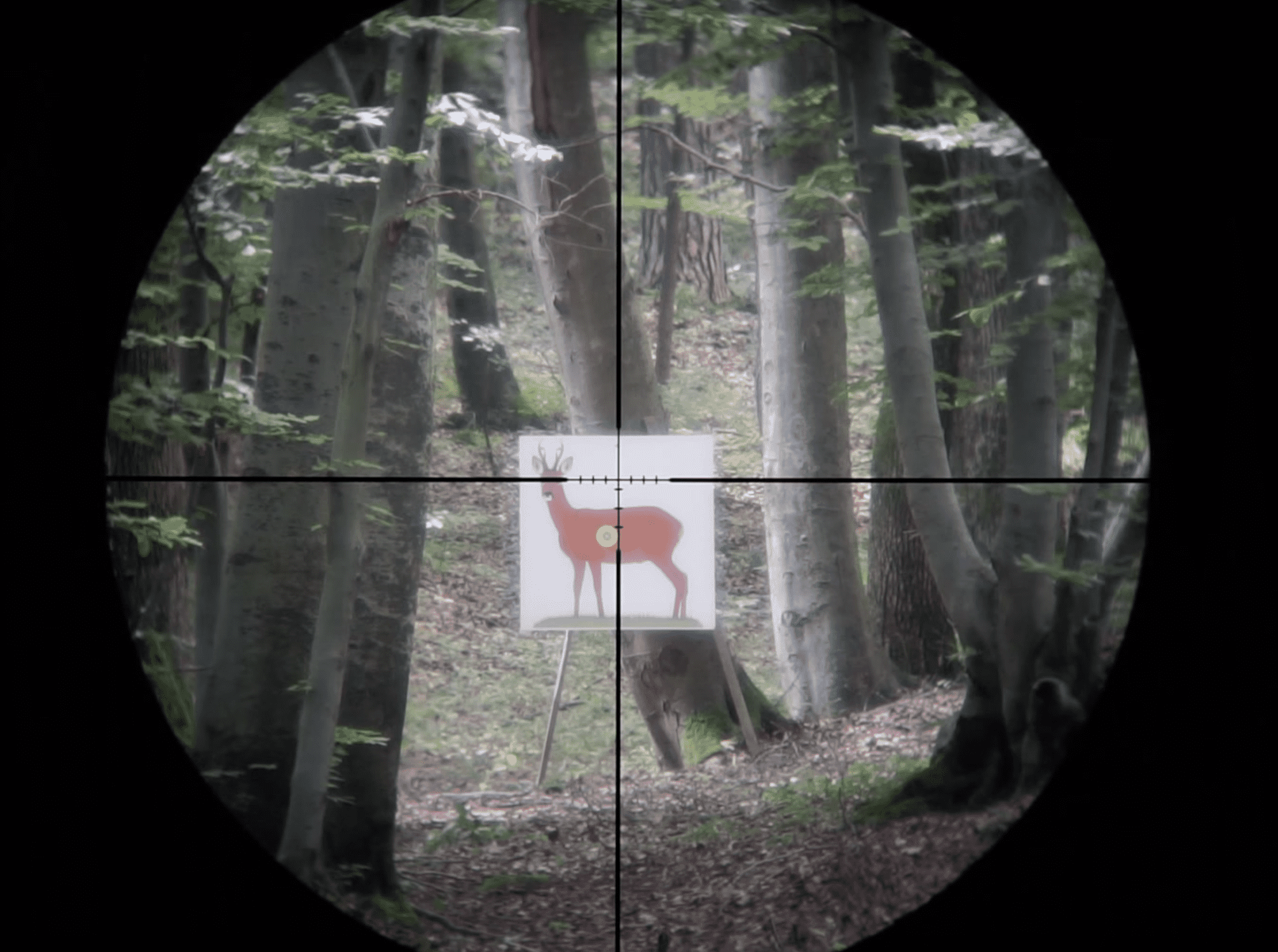
Magnification & Parallax
The 3-9x range represents classic hunting scope magnification—proven effective across decades of use. Three-power provides excellent field of view for timber hunting or tracking moving animals. During a Colorado elk hunt in thick timber where shots could happen quickly at close range, 3x let me acquire targets fast without the tunnel vision of higher magnifications. Nine-power delivers adequate detail for shot placement to 400 yards on deer-sized game.
This scope lacks adjustable parallax—it’s factory-set for 100 yards, which introduces some parallax error at other distances. During shooting at 350 yards, I noticed approximately 0.5 MOA of apparent point-of-impact shift when moving my head position behind the scope. For hunting applications where 1-2 inch accuracy matters more than sub-MOA precision, this parallax error rarely affects results. Competitive shooters or those attempting precise long-range work will find this limitation frustrating.
Elevation & Windage Knobs
Capped turrets with finger-adjustable mechanisms represent traditional hunting scope design. These aren’t tactical turrets meant for constant dialing—they’re designed to be set during zeroing and then largely ignored. Adjustments provide 0.25 MOA clicks that are audible and tactile, though not particularly crisp. During initial zeroing, I found the adjustment mechanism functional but unremarkable.
The scope provides 60 MOA of total adjustment travel—adequate for .264 Win Mag trajectory to moderate ranges. Without a canted base, expect roughly 30 MOA up from a 100-yard zero, which gets you to approximately 550 yards before running out of adjustment. For traditional hunting applications where this scope makes sense, that range exceeds practical shooting distances anyway. Turrets reset to zero easily after achieving sight-in, preventing accidental adjustments during field carry.
Eye Relief & Eye Box
Eye relief measures 3.3 inches—adequate though not generous for magnum cartridges. The .264 Winchester Magnum’s moderate recoil makes this less critical than it would be with harder-kicking rounds. I experienced no scope contact or discomfort during extended shooting sessions, even when testing the rifle from improvised field rests that sometimes resulted in less-than-ideal form.
The eye box proves notably forgiving across the magnification range—this represents one of the scope’s genuine strengths. From awkward shooting positions common in hunting situations, I could quickly find a usable sight picture without fussy head positioning. The wide field of view at 3x magnification and forgiving eye box make snap shooting on moving or suddenly-appearing game realistic. For hunters rather than precision shooters, this user-friendliness matters significantly.
Durability
Build quality feels solid for the price point. The one-piece aluminum tube construction provides rigidity, and the hard-anodized finish resists scratches from brush contact and general field handling. During testing that included transport in a standard rifle case, horseback carry, and hiking through Colorado timber, the scope maintained zero without issues.
Vortex’s VIP warranty—unlimited, unconditional lifetime coverage—provides significant peace of mind that partially offsets concerns about long-term durability. The scope is advertised as waterproof and fog-proof. During several hunts in wet weather and one particularly soggy day that saw the rifle get thoroughly soaked, internal optics remained clear without fogging. For moderate field use by careful hunters, this scope should provide years of reliable service backed by Vortex’s industry-leading warranty.
How It Really Performs
Optical Quality (19/30): Basic but functional glass. Adequate clarity for hunting applications but noticeably inferior to premium options.
Durability (21/25): Solid construction that holds up to normal hunting use. VIP warranty provides excellent backup coverage.
Usability (18/20): Simple, intuitive design that works for traditional hunting. Forgiving eye box and appropriate magnification range.
Value (13/15): Excellent value for traditional hunting applications. Delivers necessary functionality at budget-friendly pricing.
Features (7/10): BDC reticle works for holdovers. Lacks adjustable parallax and tactical features. Capped turrets suit hunting style.
See how I test and rate scopes. Learn more
Overall Performance Score: 78/100
Perfect for: Traditional hunters using the .264 Win Mag for its intended purpose—hunting deer, antelope, and similar game at reasonable ranges where lightweight handling and reliable simplicity matter more than tactical features or extreme long-range capability.
Skip it if: You’re building a long-range precision rifle, need tactical turrets for dialing adjustments regularly, require premium optical quality, or plan to shoot regularly beyond 400 yards where the limited magnification becomes restrictive.
Choosing the Right Scope for Your .264 Winchester Magnum
Selecting appropriate glass for a .264 Winchester Magnum requires understanding this cartridge’s somewhat split personality. It’s simultaneously a legitimate long-range performer and a traditional hunting round, depending on how you build and use it. The scope you choose will largely define which role your rifle fills.
Understanding Your Actual Shooting Distance
Be honest about where you’ll actually shoot, not where you imagine shooting. Many hunters building .264 Win Mag rifles get seduced by its impressive ballistics and overscope for their realistic needs. If you hunt eastern whitetails where 200 yards is a long shot, a 3-9x scope makes more sense than tactical glass with 20x magnification. Conversely, if you’re serious about prairie shooting or western hunting where 500+ yard opportunities genuinely exist, then a 5-20x or 6-24x scope becomes justified.
I’ve watched too many hunters carry heavy, high-magnification scopes on rifles that never get shot past 300 yards. The .264’s flat trajectory doesn’t automatically require maximum magnification—it just means you can exploit higher magnification more effectively when conditions warrant. Match your scope’s capability to your honest assessment of shooting scenarios, not theoretical maximums.
Weight Considerations for Hunting Rifles
The .264 Winchester Magnum often gets built into lightweight hunting rifles designed for mountain carries and all-day stalks. Mounting a 30-ounce tactical scope on a 6.5-pound rifle creates an unbalanced system that handles poorly. The Nightforce SHV, despite its excellent performance, weighs over 30 ounces—appropriate for a dedicated long-range rifle but potentially excessive for a lightweight hunting build.
Consider the total system weight. A lightweight .264 with a 16-ounce Vortex Diamondback creates a 7-8 pound ready-to-hunt package that carries comfortably all day. The same rifle with a heavy tactical scope pushes toward 9 pounds or more, which sounds trivial until you’ve humped it up and down mountains for a week. For serious backcountry hunting, every ounce matters.
First vs. Second Focal Plane for the .264
This decision hinges on how you plan to compensate for bullet drop. If you’re a “dialer” who adjusts turrets for every shot beyond 200 yards, a second focal plane scope works perfectly fine—the reticle simply serves as an aiming point. The Nightforce SHV, Bushnell Engage, and Vortex Diamondback all use SFP reticles effectively for this shooting style.
First focal plane becomes valuable when you want to use reticle holdovers without touching turrets. The Primary Arms 4-14×44 exemplifies this advantage—its FFP reticle provides accurate ranging and holdover references at any magnification. For dynamic shooting situations where speed matters or when hunting where quick follow-up shots on moving game might be necessary, FFP offers genuine advantages. However, FFP reticles can appear small and hard to see at low magnification, which matters for timber hunting applications.
Recoil Management and Eye Relief
The .264 Winchester Magnum generates roughly 18-20 foot-pounds of recoil energy depending on rifle weight and load—noticeably less than .300 Win Mag but more than 6.5 Creedmoor. This moderate recoil makes eye relief less critical than with hard-kicking magnums. Scopes offering 3.3 to 3.8 inches of eye relief work comfortably without scope bite concerns.
More important than absolute eye relief is consistency. The .264’s manageable recoil means you can maintain a consistent cheek weld and head position throughout extended shooting sessions. This consistency allows you to work effectively with scopes that have tighter eye boxes—the Nightforce SHV’s somewhat demanding eye box at high magnification doesn’t become problematic because you’re not fighting recoil-induced flinching.
Adjustment Range and Mounting Considerations
The .264 Winchester Magnum drops approximately 180 inches at 600 yards and 370 inches at 800 yards with typical 140-grain loads—significant drop that requires adequate scope adjustment. Scopes with limited travel like the Bushnell Engage (50 MOA total) benefit from 20 MOA canted bases to extend usable range. The Nightforce SHV’s 80 MOA of adjustment provides more flexibility for flat-mounting while still reaching extended distances.
Consider your realistic maximum shooting distance when evaluating adjustment range. If 500 yards represents your practical limit, nearly any scope with 50+ MOA of adjustment works fine on a flat base. If you’re serious about reaching 800+ yards, look for 70+ MOA of travel or plan to use a canted mounting base. Running out of adjustment at your intended maximum range is frustrating and entirely preventable with proper planning.
Optical Quality and Light Gathering
The .264’s flat trajectory makes it effective at distances where optical quality genuinely matters. Budget glass that looks acceptable at 100 yards shows its limitations when you’re trying to evaluate a mule deer buck at 450 yards through afternoon mirage or determine shot placement on distant steel. The quality difference between the Nightforce SHV’s ED glass and budget alternatives becomes apparent in these challenging conditions.
Large objective lenses (50mm+) gather more light for low-light shooting, which matters for hunters pursuing game during dawn and dusk. However, bigger objectives require higher mounting, which can affect cheek weld comfort. The 40-44mm objectives on the Primary Arms and Vortex Diamondback mount lower and maintain better rifle ergonomics while still providing adequate light gathering for most hunting situations. Balance optical performance against mounting practicality based on your specific requirements.
Frequently Asked Questions
What magnification range is best for a .264 Winchester Magnum?
It depends entirely on your intended use. For traditional hunting where most shots occur within 350 yards, a 3-9x scope provides adequate magnification while keeping weight down. For serious long-range work exploiting the .264’s flat trajectory beyond 500 yards, look for 5-20x or 6-24x magnification. The 4-14x range represents a practical middle ground that handles both hunting and extended-range shooting reasonably well.
Do I need a 30mm tube for a .264 Win Mag rifle?
A 30mm tube provides more internal adjustment range, which becomes important if you plan to shoot the .264 beyond 600 yards. The additional adjustment travel lets you dial for long-range shots without requiring heavily canted bases. For hunting applications where shots rarely exceed 400 yards, a quality 1-inch tube scope like the Vortex Diamondback works perfectly fine and typically weighs less.
Should I choose FFP or SFP for hunting with a .264 Winchester Magnum?
Most hunters prefer second focal plane for its consistently-sized reticle that remains visible at all magnifications. If you dial elevation adjustments rather than holding over, SFP works excellently and typically costs less. Choose first focal plane if you regularly use reticle holdovers for wind or elevation corrections, as FFP reticles maintain accurate subtensions at any magnification. For dynamic hunting situations, FFP offers flexibility advantages.
How much should I spend on a scope for my .264 Win Mag?
Budget at least $300-400 for a scope that won’t limit your rifle’s performance. The .264 Winchester Magnum is a capable cartridge that deserves better than bottom-tier glass. That said, you don’t necessarily need $2,000 optics unless you’re building a dedicated precision rifle. The $400-900 range offers scopes like the Bushnell Engage and Primary Arms that provide solid performance without breaking the bank. If you’re serious about long-range work and can afford it, the Nightforce SHV’s $900-1,100 price tag delivers genuinely premium performance.
Will these scopes hold up to the .264’s recoil?
The .264 Winchester Magnum generates moderate recoil—roughly comparable to .270 Winchester but less than .300 Win Mag. Any scope built for centerfire rifle cartridges handles this recoil without issues. The greater concern is mechanical reliability and zero retention during transport and field use, which is why I emphasize durability testing in my evaluations. All four scopes reviewed here proved adequate for .264 Win Mag recoil levels.
Can I use these scopes for long-range precision shooting?
It depends on your definition of “long-range precision.” The Nightforce SHV and Primary Arms 4-14×44 both offer the tracking accuracy and adjustment range for serious work to 800+ yards. The Bushnell Engage works to 600-700 yards but has limited adjustment travel. The Vortex Diamondback is designed for traditional hunting ranges and lacks the magnification or adjustment range for extended precision shooting. Match your scope to your realistic shooting distances and precision requirements.
Disclosure
I purchase every scope I test with my own money through normal retail channels. I don’t accept free products, sponsorships, or compensation from manufacturers, which allows me to provide honest assessments without conflicts of interest. If a scope performs poorly or fails during testing, I report that without worrying about damaging relationships with companies.
This guide contains affiliate links to Amazon and OpticsPlanet. If you purchase through these links, I receive a small commission at no additional cost to you. These commissions help offset the significant expense of purchasing and testing equipment for these detailed reviews. My recommendations are based solely on performance during testing—I don’t recommend products just because they offer higher commission rates.
My goal is providing useful, honest information that helps you make informed decisions about scope selection for your .264 Winchester Magnum. I’ve been doing this long enough that my reputation matters more than any short-term financial gain from biased reviews.
Final Thoughts
The .264 Winchester Magnum deserves better than it typically receives—both in terms of general recognition and appropriate optics pairing. This cartridge predates the modern 6.5mm craze by decades, yet it delivers ballistics that remain competitive with contemporary offerings when fed quality components. Choosing the right scope unlocks its considerable potential whether you’re building a lightweight hunting rifle or a dedicated long-range precision system.
For shooters building a serious long-range .264 who can accept the weight and cost, the Nightforce SHV 5-20×56 represents the clear choice. Its optical quality, mechanical reliability, and appropriate magnification range match what this cartridge can actually deliver. The scope won’t be your limiting factor when attempting challenging shots, and it’ll likely outlast the rifle it’s mounted on.
If maximum magnification matters more than absolute optical refinement—perhaps you’re serious about prairie dog shooting or steel work past 600 yards—the Bushnell Engage 6-24×50 delivers that capability at roughly half the Nightforce’s cost. It’s not premium glass, but it’s competent glass with useful magnification.
Budget-conscious shooters wanting to learn first focal plane reticle use and turret adjustments should strongly consider the Primary Arms 4-14×44. It delivers FFP functionality that typically requires spending twice as much, backed by a lifetime warranty. The optical quality won’t wow anyone, but the mechanical performance exceeds reasonable expectations for the price.
For traditional hunters using the .264 as Winchester originally intended—a flat-shooting rifle for western game at reasonable ranges—the Vortex Diamondback 3-9×40 provides everything actually needed without excess weight or complexity. It’s not exciting, but it’s proven and reliable, which matters more than features you won’t use.
The .264 Winchester Magnum remains an excellent cartridge that never quite achieved the popularity it deserved. Pairing it with appropriate glass—whether that’s simple hunting optics or serious tactical glass—allows you to appreciate what this capable round actually delivers. My hope is this guide helps you make that pairing decision based on your specific needs and realistic shooting scenarios rather than marketing hype or theoretical maximums.

Hi, I am Jerry L. Miculek and I am experienced firearms and optics expert. Guns are not just a hobby for me, they are my passion and life. You can learn more about me on my About page.